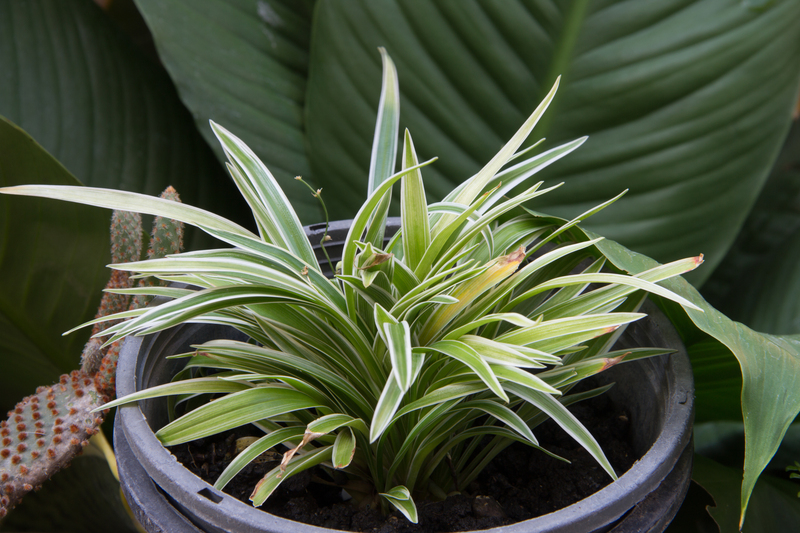Mastering Orchid Care: A Guide to Long-Lasting Blooms
Posted on 23/05/2025
Mastering Orchid Care: A Guide to Long-Lasting Blooms
Orchids are renowned for their stunning, long-lasting blooms and exotic beauty. However, many plant enthusiasts find themselves struggling to keep these magnificent flowers thriving beyond their initial burst of color. If you have ever wondered how to maintain healthy orchids and encourage them to flower year after year, you are not alone. In this comprehensive guide, we will unlock the secrets to mastering orchid care and reveal the best practices for ensuring your orchids produce vibrant blooms that last.
Understanding Orchids: More Than Just Gorgeous Flowers
Before diving into the specifics of orchid care, it's important to understand what makes these plants unique. Belonging to the vast Orchidaceae family, orchids are one of the largest and most diverse groups of flowering plants. With over 25,000 species and more than 100,000 hybrids, orchids have adapted to nearly every ecosystem on earth. Their extraordinary adaptability is reflected in their different shapes, sizes, and blooming patterns.
Popular Types of Orchids
- Phalaenopsis (Moth Orchid): Known for their long-lasting blossoms and ease of care.
- Cattleya: Famous for their vibrant colors and strong fragrance.
- Dendrobium: Prized for abundant, delicate flowers in a variety of hues.
- Oncidium (Dancing Lady): Recognized by their lively, frilled blossoms.
- Vanda: Valued for their striking colors and aerial root structure.
Each type may require slightly different care; however, they share several essential needs that are crucial to achieving long-lasting orchid blooms. Let's unravel these requirements step by step.

Essential Factors for Successful Orchid Care
1. Light: The Key to Healthy Orchid Blooms
Lighting is one of the most critical elements for keeping orchids well. Orchids thrive in environments that provide bright, indirect light. Too much direct sun can scorch their leaves, while too little light can hinder growth and prevent blooming.
- East or North-Facing Windows: Ideal for most orchids, as they offer plenty of gentle light.
- South or West-Facing Windows: May need sheer curtains or blinds to filter harsh rays.
Monitor your orchid's leaves for signs: dark green leaves may indicate too little light, while yellowish or sunburned patches point to excessive sunlight. Perfecting your orchid's lighting is a sure step toward achieving long-lasting orchid blooms.
2. Watering with Precision
Proper watering is essential, yet one of the most misunderstood aspects of orchid maintenance. Most orchids are epiphytes, meaning they grow naturally on trees and absorb moisture from the air and rain. As a result, their roots are highly sensitive to excess water.
- Check the Potting Mix: Allow it to dry slightly between waterings.
- Use Lukewarm Water: Water in the morning to allow leaves to dry by nightfall.
- Avoid Overwatering: Roots should never sit in stagnant water, which invites rot.
A general rule is to water once a week. However, check the potting medium and adjust based on humidity and temperature. Healthy roots are firm and white or green; mushy or brown roots signal overwatering.
3. Humidity: Creating a Tropical Paradise
Most orchids prefer moderate to high humidity--around 50-70% is ideal. If your environment is dry, especially in winter, consider these orchid care strategies:
- Misting: Lightly spritz leaves during dry spells (early morning only).
- Use a Humidity Tray: Fill with pebbles and water; set your orchid pot atop the tray (not directly in the water).
- Group Plants Together: Increases humidity through collective transpiration.
Maintaining optimal humidity supports robust leaf growth and maximizes the potential for impressive, long-lasting blooms.
4. Temperature: Keeping Orchids Comfortable
Temperature is another important factor in successful orchid maintenance:
- Daytime Temperatures: 70-85?F (21-29?C)
- Nighttime Temperatures: 60-70?F (15-21?C)
Many orchids require a slight drop (about 10?F or 5?C) in temperature at night for optimal blooming. Sudden drafts or extreme fluctuations can stress your orchid and hinder flowering. Always avoid placing orchids near heating or cooling vents.
5. Proper Feeding: Nourishing for Vitality and Blooms
Orchids need specific nutrition for health and prolific blooms. Use a balanced, orchid-specific fertilizer such as 20-20-20 or a formula slightly higher in phosphorus (the middle number) to encourage flowering.
- Fertilizing Schedule: Apply every 2-3 weeks during active growth. Reduce to once a month when orchids are dormant.
- "Weakly, Weekly" Approach: Dilute fertilizer to one-quarter strength and feed more frequently.
- Flush with Fresh Water: Every fourth feeding, water the plant thoroughly to avoid salt buildup.
Proper fertilization is a cornerstone for maintaining orchid blossoms and overall vitality.
Repotting Orchids: When and How
Repotting is essential in orchid care, but only when necessary, typically every 18-24 months or when the growing medium breaks down. Here's how to do it:
- Choose the Right Pot: Clear, slotted pots are ideal for monitoring roots and airflow.
- Select Fresh Medium: Use bark, sphagnum moss, or a specialty orchid mix.
- Gently Remove Old Medium: Prune away rotten or dead roots with sterilized scissors.
- Reposition and Refill: Set orchid at the same depth and backfill with moist medium.
- Water Sparingly: Allow the plant to settle before resuming regular watering.
Repotting rejuvenates your orchid, reduces the risk of disease, and ensures ample room for healthy root growth and long-lasting blooms.
Encouraging Reblooming and Longer Lasting Blooms
Even experienced growers sometimes struggle to coax orchids into reblooming. Follow these steps to maximize your success:
1. Respect Dormancy Periods
Many orchids, especially Phalaenopsis, require a rest period after flowering. Reduce water and fertilizer, maintain cooler temperatures, and avoid repotting until new growth appears. Patience is key to long-term orchid flower care.
2. Provide a Temperature Drop
A gentle dip in nighttime temperatures for several weeks often triggers new flower spikes, especially in autumn. This simulates their natural tropical environment and persuades the plant to bloom.
3. Prune Correctly for More Blooms
- For Phalaenopsis: After the last bloom falls, cut the spike above a node (the small bump below a faded flower) to encourage side shoots and more flowers.
- For other varieties: Trim the spike all the way down to promote new growth from the base.
With proper orchid plant care, your favorite orchid may flower multiple times a year, boasting repeatedly spectacular displays.
Troubleshooting Common Orchid Problems
Even with the best care, issues may arise. Here's how to handle some frequent challenges in orchid flower care:
Pest Infestations
- Mealybugs, Aphids, or Scale: Wipe leaves with diluted rubbing alcohol and use insecticidal soap as needed.
- Spider Mites: Raise humidity and spray affected areas with water; treat stubborn cases with horticultural oil.
Leaf Problems
- Wrinkled Leaves: Usually a sign of underwatering or root rot.
- Black/Brown Spots: Could indicate fungal disease. Remove affected leaves and improve air circulation.
Bloom Failure or Bud Drop
- Sudden Changes: Avoid moving plants abruptly or exposing them to drafts.
- Improper Environment: Review and adjust light, water, and temperature as needed.
By addressing these concerns promptly, you can maintain beautiful, resilient orchid blooms through every season.

Tips for Displaying and Enjoying Your Long-Lasting Orchid Blooms
Orchids are not only delightful houseplants but also stunning decor showpieces. To make the most of your long-lasting orchid flowers:
- Choose Decorative Pots: Slip grow pots into ceramic or glass containers (with airflow!) for stylish presentation.
- Rotate Orchids Occasionally: Ensure even growth and prevent leaning by rotating your orchid every few weeks.
- Group by Species: Cluster orchids with similar care needs for easy maintenance and a lush, vibrant display.
- Embrace Minimalism: Showcase a single, elegant orchid for a dramatic touch in any room.
Conclusion: Elevate Your Orchid Care Routine
With patience, observation, and these orchid care tips, you will master the art of nurturing orchids for long-lasting blooms. By fine-tuning light, water, humidity, feeding, and temperature, you'll enjoy healthy plants that bring stunning colors and lasting beauty to your home again and again. The world of orchids is endlessly fascinating--begin your journey today, and unlock the full potential of these enchanting flowers!
Frequently Asked Questions About Orchid Care
Q: How often do orchids bloom?
A: Most common varieties, like Phalaenopsis, bloom once a year for several months. With ideal care, some can rebloom multiple times.
Q: Why are my orchid's leaves turning yellow?
A: Yellow leaves may signal overwatering, excessive sunlight, or nutrient deficiencies.
Q: Should I mist my orchid every day?
A: Light misting may help increase humidity, but avoid overdoing it, as excessive moisture can cause fungal problems.
Mastering orchid care requires attention, consistency, and a willingness to learn. Follow the guidance above, and you'll be rewarded with breathtaking, enduring blooms season after season.



